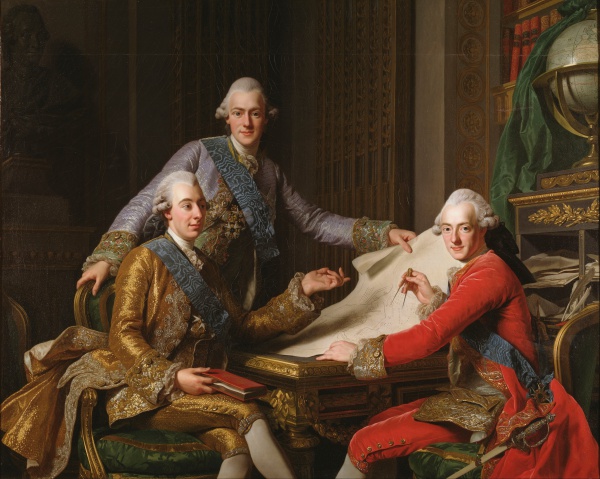Facts About King Gustav III of Sweden and his Brothers
The oil painting "King Gustav III of Sweden and His Brothers" by Alexander Roslin offers a striking portrayal of King Gustav III alongside his brothers, Prince Frederick Adolf and Prince Charles (later Charles XIII of Sweden). In this artwork, housed at the Swedish National Museum, Prince Frederick stands, Gustav is seated to the left, and Charles is positioned to the right. The painting is signed "Roslin à Paris 1771" reflecting Roslin's long-term residence in Paris, where he settled in 1752.
Alexander Roslin, a celebrated portrait artist, was inducted into the French Académie the same year he moved to Paris—a notable achievement for a non-French artist. His talent earned him commissions from European aristocrats in cities such as Paris, St. Petersburg, Bayreuth, and Stockholm. Gustav III, known for attracting artists to his court, became a key patron of Roslin, commissioning several portraits of the Swedish royal family in varied styles and compositions.
During the late 18th century, Sweden was undergoing significant reconstruction and revitalization under the rule of Gustav III. Roslin’s portraits of the king often carried symbolic weight, portraying him as figures like "Hercules who will crush the Hydra of anarchy and discord." Roslin’s career thrived in France thanks to royal patronage, and Gustav III commissioned multiple works, including this group portrait of the three royal brothers.
In the painting, Roslin employs a triangular composition, showing the princes examining a plan of fortifications around a table. Since the brothers did not pose together, they appear somewhat disconnected, each interacting with the plan in their own way. Roslin’s mastery in depicting fabrics and vibrant attire brings lifelike and elegant qualities to the painting. Despite the serious nature of their roles, the princes are presented with dignified decorum.
This painting is part of a series where the brothers are portrayed separately in various settings and attire for allegorical purposes. Roslin's ability to capture the physical likeness and elegance of his subjects, while balancing the complex considerations of their presentation, makes this painting a standout piece in the Swedish National Museum's collection.

 Finland
Finland